Rose John Davis
European rose varieties are highly valued by Russian flower growers. This happened, mainly because the varieties of ornamental flowering plants bred in the countries of the Old World are more adapted to our latitudes due to their high resistance to cold weather. However, one should not ignore the creations of breeders working on other continents. For example, the John Davis variety also has something to surprise you.
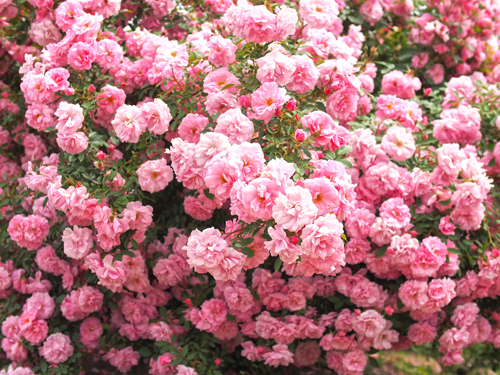
History of origin
This type of beautiful flower is the result of the work of Canadian specialists. It appeared in the last century: according to some sources, in 1977, according to others - in 1986. The florist company Svejda became the direct creator of the variety. The crop is a hybrid derived from the Rugosa rose and the wild rose, and is also a representative of the Explorer series. In 2000, our heroine won the AARS competition - the American Rose Society.
Description of the variety
John Davis is a scrub that can be cultivated as a climbing rose if desired. The plant looks like a powerful, dense, spreading bush with many sharp thorns on long, arched or arched, drooping, but flexible shoots. Its height varies from 2 to 2.5 meters, width indicators are about the same. Perennial leaves are small, but shiny, bright green and numerous. Young stems are reddish, with short internodes.
The flowers of the Canadian enchantress are very beautiful. At the stage of buds, they have a pointed shape and a reddish-pinkish tint, and when they dissolve, they turn into a deep pink color, become double and expose a core with golden stamens. In the future, the flowers turn pale, and the petals at the base acquire a cream color. By the way, there are quite a lot of petals in each John Davis flower, which is why the opened buds look lush. I must say that in the external appearance of the flowers of this variety, the features of old roses are clearly traced. This gives the plant a special charm. The size of each flower varies from 7 to 9 cm. Delicate flowers are formed in inflorescences of 5-10, or even 15 pieces. Their aroma is not pronounced, pleasant, combines fruity and spicy notes. The culture acquires inflorescences in the second half of June and blooms throughout the summer season, capturing even September. The older the decorative perennial, the more abundant the flowering of a noble plant.
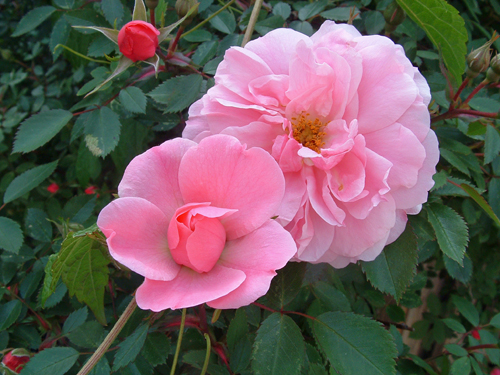
Our heroine has excellent winter hardiness. It does not do any harm when the air temperature drops to -34 ° C. John Davis is also highly resistant to black spot and powdery mildew. Light rains do not disturb the shape of the flower, but the delicate petals fade in the sun. The bush does not differ in neatness and compactness; during abundant flowering it usually falls apart, and therefore it needs support.
Features of agricultural technology
The park rose loves sunny places, but you can plant it in partial shade. You should also provide the plant with normal air circulation in order to protect the adorable flower from the possible occurrence of diseases and attacks of insect pests. It is not recommended to place the John Davis variety in the lowlands.
The plant is planted in the spring. The Canadian beauty makes high demands on the quality of the soil, so choose for her only fertile, light, loose, moisture-consuming soil with a slightly acidic reaction. It is good if it is a loamy substrate. The depth of the planting hole is made at least 60 cm.When you begin to cover the seedling with earth, make sure that the root collar is about 3 cm below the soil level.To increase the degree of nutritional value of the soil, organic and mineral fertilizers are introduced into the hole in advance, and to prevent stagnation in on the substrate of moisture, a layer of drainage material is laid on the bottom of the pit.
Probably the most important thing in the care of a rose is timely watering. It should be plentiful (up to 2-3 times a week), especially during dry summer. Water for this procedure is used soft, slightly warm.John Davis is very responsive to feeding. In the spring, the plant needs organic fertilizers to stimulate the growth of green mass on the shrub. In the budding stage, superphosphate is added under the perennial. Mineral feeding is carried out a couple of weeks after the end of flowering.
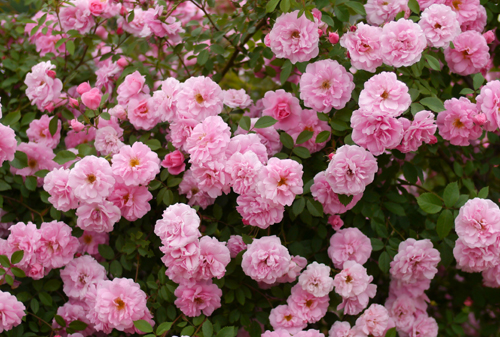
In the year of planting, it is undesirable to allow the appearance of flowers on the John Davis bush. It is recommended to remove all buds that form, and only in August leave a maximum of 2 flowers on the bush. This will help the shoots to better endure the upcoming cold weather, and next year will ensure the lush flowering of the perennial. Every spring, the hybrid is necessarily pruned. During this procedure, diseased, frozen and dry branches of the rose are removed. The plant may also need formative pruning if you want it to be neater. Overgrown bushes are thinned out in autumn.
It is necessary to cover a perennial only if it is cultivated in a region with a harsh climate. To do this, the shrub is spud with dry soil, and then insulated with felt or kraft paper in several layers. A couple of times a season it is worth spraying the plant with solutions of a fungicide and an insecticide. So you will protect your pet from the possible appearance of fungal diseases and harmful insects.
Use cases
The Canadian John Davis variety looks best when planted in groups of 3-4 shrubs against the backdrop of an emerald grass lawn or the darker needles of evergreens in the background. You can also place the culture in mixed compositions. Good neighbors for her will be sage, astilbe, lupine, lavender, decorative white onions, cereals, subulate carnation, armeria, geranium, curly daylily, irises. The combination of the John Davis variety looks great with other varieties of scrubs, pleasing to the eye with snow-white, yellow or cream flowers. When placing a decorative perennial in a rose garden, make it the central figure, and plant roses from the hybrid tea group around. The culture is suitable for decorating a hedge, for decorating a gazebo, including as a climbing variety.
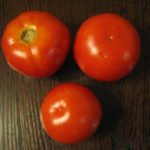

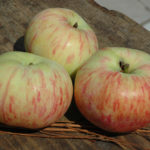
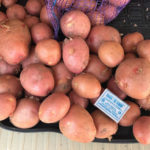
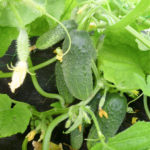




I met this rose a long time ago - I saw it for the first time in the midst of flowering and was greatly amazed by its abundance, the bush was simply buried in flowers - there were no leaves behind them! Of course, I found out the name of the variety, found it with great difficulty, planted it and prepared to wait for a miracle, but it did not happen either a year or five after planting. The rose grows well, blooms well in the first wave, which lasts a month, and then ... in the center of the garden there is a huge monster with a small number of nondescript flowers. Roses last a long time, but fade very quickly. It hibernates well, but it is not possible to bend it down for hibernation - the stems are very thick, fragile and prickly.